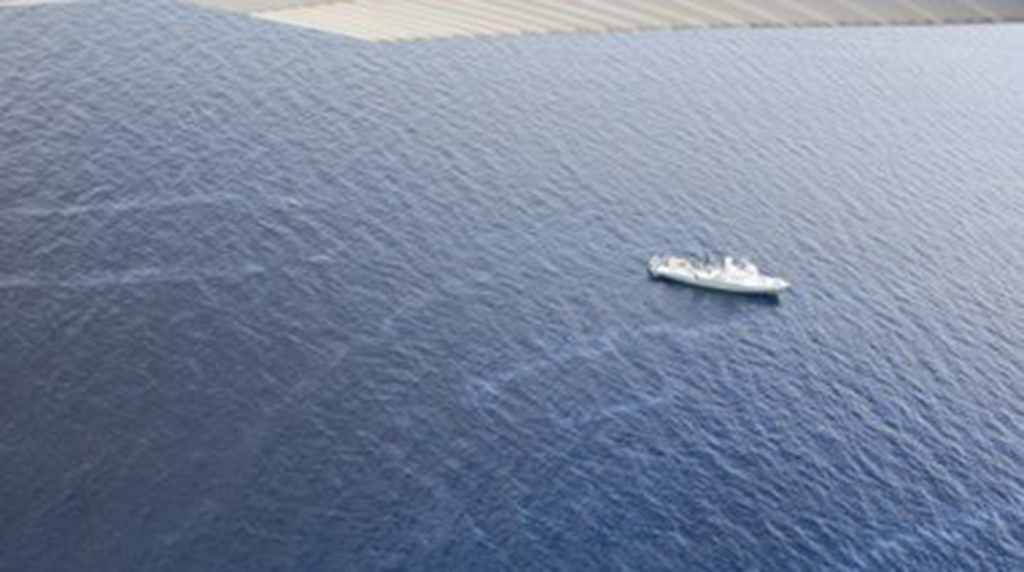November 11, 2012
An overflight inspection of the BP Deepwater Horizon disaster site 40 miles south of Grand Isle this past weekend found a new, mile-long oil sheen, which has prompted the U.S. Coast Guard to again require BP to inspect the wellhead and debris area on the floor of the Gulf of Mexico with a remotely operated vehicle for the source of the oil. The flight was piloted by Bonny Schumaker, founder of the California-based non-profit On Wings of Care, which has conducted surveillance flights in the Gulf in the two years since the spill.
Schumaker reported that during her several flights over the wellhead during the past few days, she was able to direct the Schmidt Ocean Institute’s Research Vessel Falkor to the sheen site, where it conducted an inspection of the wellhead with an ROV and found no indication that the oil was coming from the wellhead or the debris field.
"A plan was submitted for an additional remotely operated vehicle to inspect the underwater site of the Deepwater Horizon incident, to determine the source of a surface sheen," said Coast Guard spokesman Ensign Glenn Sanchez. The new inspection will again focus on the wellhead, cofferdam and the riser pipe that once connected the wellhead to the surface.
"After recently confirming for a third time with ROV video inspection that the Macondo well and its associated relief wels are secure, we've capped and plugged an abandoned piece of subsea equipment known as a cofferdam that was identified as a potential source of sheen," said spokesman Craig Savage. "A further investigation is planned to inspect the Deepwater Horizon rig. If it's identified as a potential source of sheen, we'll work with the Coast Guard and rig-owner Transocean to address the matter."
In a Sunday post on her weblog, Schumaker quoted Florida State University marine biologist Ian MacDonald, who is the ship’s chief scientist, as saying the most likely source for the new sheen is one or more natural seeps of oil to the east of the well that are associated with a salt dome beneath the gulf bottom. Oil deposits often are found along the edges of the underground salt formations.
“The bottom near the wellhead is totally transformed by drill cuttings and debris,” MacDonald told Schumaker. “It was unlike any deepsea benthos I have ever seen.”
Benthos is the scientific term for the sediment layer on an ocean’s floor, and for the organisms that live in the sediment.
MacDonald described the Gulf floor around the Macondo wellhead as strewn with broken rock debris, apparently the cuttings from drilling the original Macondo well or two relief wells in the aftermath of the months-long oil spill.
“However, we saw no indication of oil or active seepage,” he said.
The bottom also was covered with numerous pipes and rusted metallic debris, he said
“However, neither the swath-mapping results nor our direct observations with the ROV turned up any evidence of ongoing seepage from the blown-out well or nearby sources,” he said. “We did not explore the coffer dam,” which was plugged a month ago by contractors for BP after an earlier ROV survey identified oily debris dripping upward to the surface from openings in the 40-foot-high structure that was abandoned in 2010 after being used in a failed attempt to halt the leaking well.
“Although we are seeing floating oil slicks over the MC252 site, it appears that their source is not associated with the well,” he said.
The Falkor’s research cruise is financed by the Schmidt Ocean Institute. Part of MacDonald's research aboard the ship is underwritten by a grant from BP’s Gulf of Mexico Research Initiative, and is part of a study of ecosystem impacts of oil and gas in the Gulf, that includes researchers from the University of Mississippi and from several Louisiana universities, and the use of the R/V Pelican, based at the Louisiana Universities Marine Consortium in Cocodrie.


















 back to top
back to top